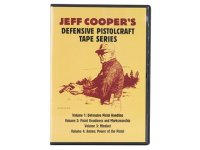HitTheTarget
Member
- Joined
- Oct 28, 2012
- Messages
- 9
- Reaction score
- 0
I hope the following question does not generate too many raised eyebrows. The "right" answers are likely: 1) be sure to keep your thumbs away from the chamber-especially the gap between the chamber and the barrel and 2) whatever feels OK and works for you is the right grip to use
That said, here is the question: I'm working my way through a fine book entitled "The Perfect Pistol Shot" by Albert League III (copyright 2011). I was cruising along until I got to the part on proper grip. The author makes a pretty strong argument for keeping ones thumbs (shooting and support hands) off the handgun, at a 45 degree angle-I assume to the line of the barrel. The logic is any pressure from the thumbs on the frame can cause unwanted torque and throw your shot off
I have to say this thumbs off approach is different from what I've read, been taught, and what I see in various videos. I tried it out-dry fire practice with my J frame- while I didn't drop the gun, this change in grip felt a little less than "natural". I'll have a chance to try it out with live fire later this week
I'm willing to try it and spend time retraining with a new grip, but I'm wondering if anyone else has experience with this approach. I'm new enough to shooting to not have too many bad habits (yet)
Thanks in advance for the input (and Happy New Year) to all!!
That said, here is the question: I'm working my way through a fine book entitled "The Perfect Pistol Shot" by Albert League III (copyright 2011). I was cruising along until I got to the part on proper grip. The author makes a pretty strong argument for keeping ones thumbs (shooting and support hands) off the handgun, at a 45 degree angle-I assume to the line of the barrel. The logic is any pressure from the thumbs on the frame can cause unwanted torque and throw your shot off
I have to say this thumbs off approach is different from what I've read, been taught, and what I see in various videos. I tried it out-dry fire practice with my J frame- while I didn't drop the gun, this change in grip felt a little less than "natural". I'll have a chance to try it out with live fire later this week
I'm willing to try it and spend time retraining with a new grip, but I'm wondering if anyone else has experience with this approach. I'm new enough to shooting to not have too many bad habits (yet)
Thanks in advance for the input (and Happy New Year) to all!!





